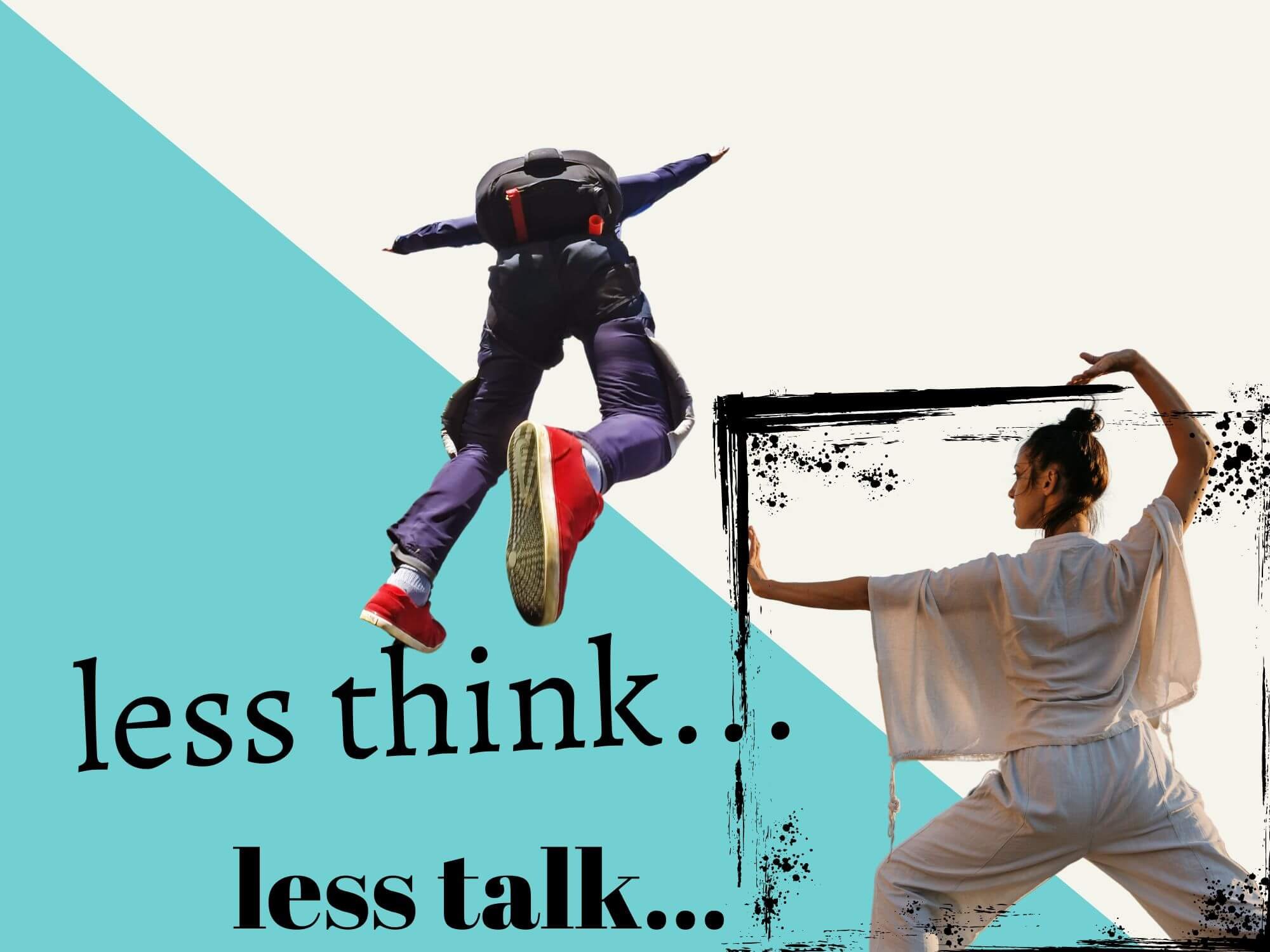Setting Daily Goals (how I do it + why it’s a solid move)
In January of this past year, I started a song-a-day challenge for 1 year. It’s been an awesome journey so far, but one standout benefit I’ve noticed is the power of setting daily goals.
So this is my quick guide and experience on the topic.
Let’s get to it.
Table of Contents Show
Hey there, just a heads up that some of the links in this post may be affiliate links. That means I earn a small commission. This is at no extra cost to you, but helps me keep the lights on. Thank you for your support!
Small Goals, Big Goals (+ how they’re connected)
Great things are made up of small steps compounding over time.
So what’s considered a small step and when does something become a big goal?
Of course, this’ll vary for everyone, but here’s how I define things.
Small goals are nano objectives that can be achieved in 1 week or less. For example, my daily goal of writing one song everyday.
Big goals are objectives that require many months or even years to achieve. For example, growing a social media following from my daily songwriting journal.
This all makes sense – nothing groundbreaking to see here.
But the interesting (and practical) part of this discussion is how big and small goals are intimately connected.
As I said in the beginning of this section, great things are made up of small steps.
Big goals are the end product of meeting many small goals over time.
So let’s look at some of the specific benefits of setting nano goals.
Why Is It Important to Set Daily Goals?
Big goals aren’t reached by taking sudden giant leaps. They’re achieved with patience and an abundance of micro actions.
Daily goals turn into monthly goals, which turn into yearly targets.
Put another way, awesome things are made up of consistent tiny moments.
These tiny targets pour the foundation and build the structure of what will become your grandiose vision.
Am I being overly optimistic? A bit reductionist to the complexities of doing said awesome things?
Perhaps.
But if Occam’s razor is right (and I believe it is), this simple daily-goal strategy for reaching larger-than-life goals may be the secret sauce to success.
And it’s hiding in plain sight.
So, why is it important to set daily goals? Here’s my take:
Small goals are easier to achieve
Small goals build confidence
Small goals support habit formation and routine
Small goals are easier to stay focused on
Small goals compound over time
Small goals are the key ingredients to reaching bigger goals
Some Examples of Daily Goals (ideas for inspiration)
Again, your definition of a small daily goal may differ from mine.
But I like to customize my daily goals based on longer-term visions, values and preferences (more on this in the next section).
For example, do you prefer daily goals for productivity and success or do you want to focus on daily goals for self improvement?
Maybe all of the above.
Either way, here’s a short list of some daily goal examples for inspiration.
Practice gratitude
Start a journal
Exercise or go for short walks
Start a daily meditation routine
Do yoga
Talk to or meet someone new
Study a foreign language for 30 minutes
Learn a new word everyday
Do something creative everyday (like photography, art or even making music)
Read a chapter from a book everyday
Write and publish a new blog post everyday
How to Set Daily Goals (5 steps)
Let’s look at how to set (and reach) daily nano goals.
This is the system I use to organize my objectives and make things happen.
1. Identify A Long-Term Vision
There are endless examples of things worth pursuing.
So you may be wondering, what daily goals should I have?
The best advice I can offer is to customize things to your personal values, preferences and long-term vision(s).
Of course, there are things anyone can add into their routine, like drinking more water or exercising (and these can add some serious fuel to your other pursuits).
But creating a customized plan that’s attached to some bigger goal is more strategic (and more fun, IMO).
This requires a bit of self reflection, like defining your purpose or ikigai (the Japanese concept of life purpose). But it’s an awesome and exciting journey worth taking.
So, here are some questions worth pondering:
What long-term goals do you have?
What would your future dream life look like?
What vision do you have for yourself?
How would you describe your ideal life?
2. Reverse Engineer Your Vision
Getting from point A to point B requires a plan. And reverse engineering is that plan.
Reverse engineering goals is a form of planning where you break down a bigger, longer-term goal into its smaller component pieces.
This helps with focus and clarifies what steps you need to take (and in what order).
I like to first break down my long-term vision into micro objectives, which represent monthly goals to work towards.
Then, I further break things down by reverse engineering each monthly goal into even smaller nano targets (i.e. daily goals).
You can keep breaking things down further from here until you reach a point that’s comfortable for you and your personal preferences.
I just try to match my daily goals to what’s realistic for me and my lifestyle.
For example, writing one song everyday fits into my current lifestyle. But what if I start backpacking through Asia and shift focus to more filmmaking?
Well, suddenly writing a full song everyday starts to get a little more difficult and unrealistic.
3. Create A Workflow
Small daily goals are like small daily habits. And if we really want to make things stick, we’ll need a workflow.
A workflow is a set of processes for you to follow. It’s like a custom schedule and routine based on your personal strengths, weaknesses and goals.
It’s a repeatable system and usually addresses personal bottlenecks (such as time constraints or a lack of motivation).
For setting daily goals, a workflow ensures you check off your 24-hour targets.
Here’s an example of what a daily goal workflow may look like:
Morning → Spend 5-10 minutes reviewing and visualizing your day’s goal
Afternoon → Map out and confirm the details, steps and timing for your goal
Evening → Set aside x minutes to work on your goal
Here’s another workflow example:
First → Spend 5-10 minutes visualizing and mentally preparing yourself
Second → Do focused work on your daily goal for 20-25 minutes
Third → Schedule in a 5-10 minute break (using a timer)
Fourth → Do another round of focused work on your daily goal
Fifth → Spend 5-10 minutes reflecting on your day’s goal and progress
Everyone’s workflow will look slightly different and it ultimately depends on your objectives, preferences and personal strengths or weaknesses.
But if you’re not sure what your ideal workflow looks like, just try testing different ones out until you find what works for you.
4. Stay Organized
Whether you’re managing multiple goals at the same time or laser focused on just one, keeping organized is essential for productivity and checking things off.
Luckily, there are tools and strategies to help.
Here are some ways to stay organized with your daily goals:
Use a daily goals planner to track, monitor and schedule your stuff
Start a goals journal to reflect on your progress
Use a daily goals app like Todoist
Use a more robust daily goals tool like Notion
It’s not always obvious to realize how much you’re improving day-to-day.
But organizing your goals and keeping track of your progress lets you step back and zoom out every once in a while.
5. Reflect + Review
As you get into the routine of setting daily goals, you’ll start gathering insights and data.
So now’s the time to reflect and review.
For me, I like to periodically revisit my motivations and reasons for why I’m pursuing certain goals.
This is especially helpful if I find myself losing interest or inspiration.
Alternatively, I may also find myself veering a little too far off course.
I’m all for trying new things and exploring new interests, but I also try to stay focused and attach my nano and micro goals to the bigger picture.
So if I’m spending too much time working on goals that aren’t helping me reach my long-term visions, I like to reorganize things.
I aim for the 80/20 rule.
80% of the things I do are directly related to my long-term goals, while 20% are for fun and driven by personal curiosity.
Because sometimes those “random” goals in the 20% end up helping me achieve my long-term goals in some surprising way.
Want More? Check Out These Sweet Reads!







